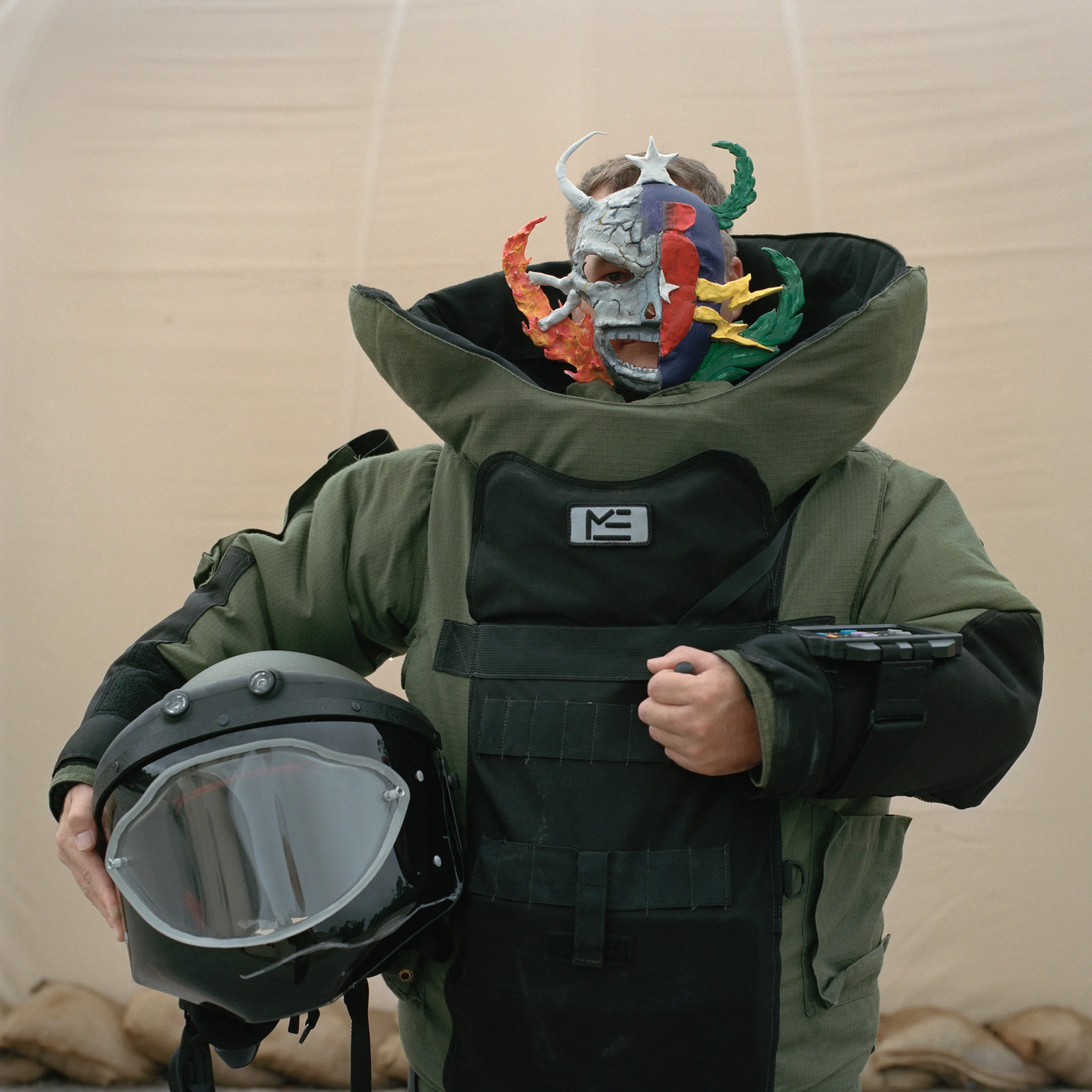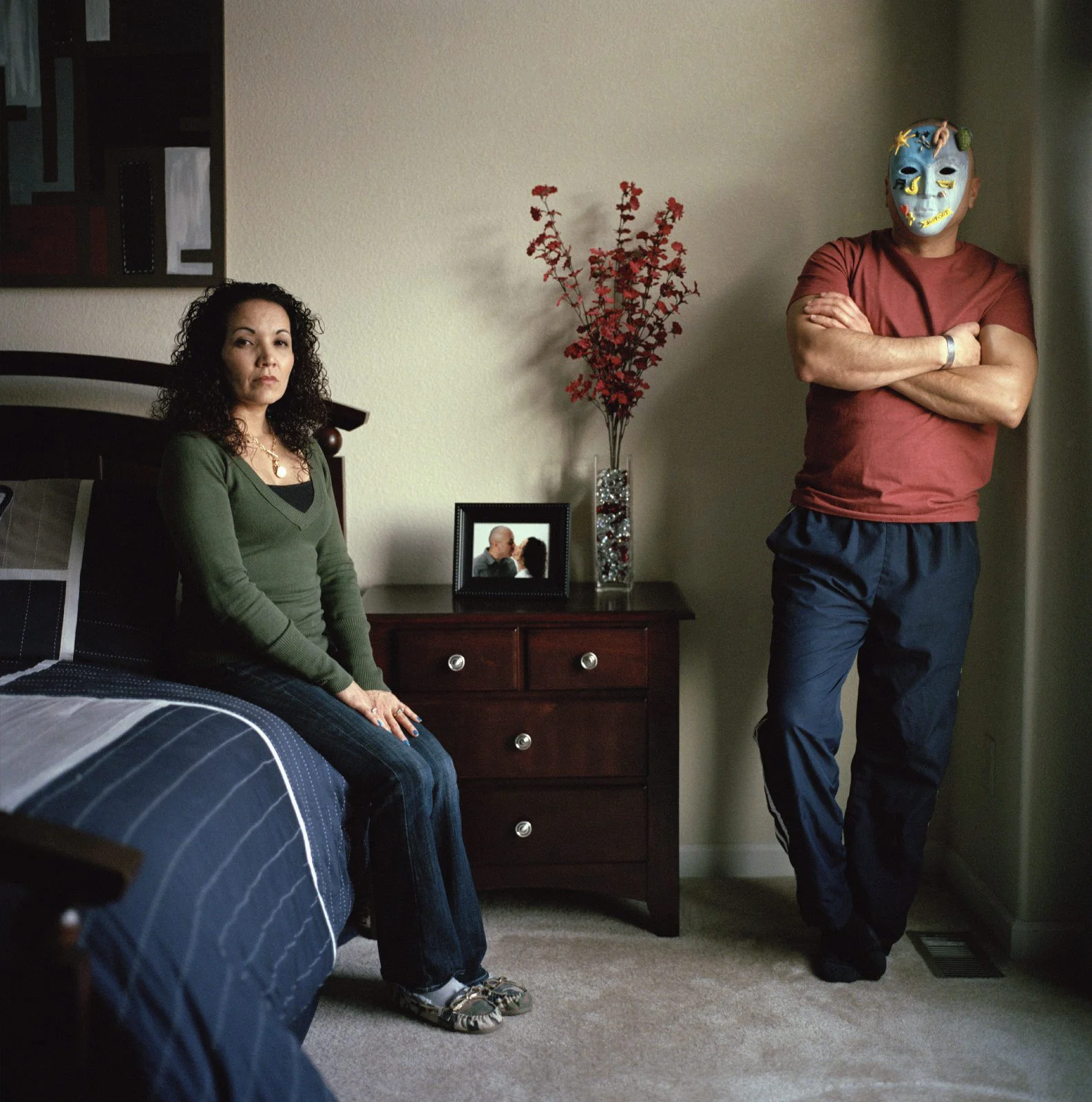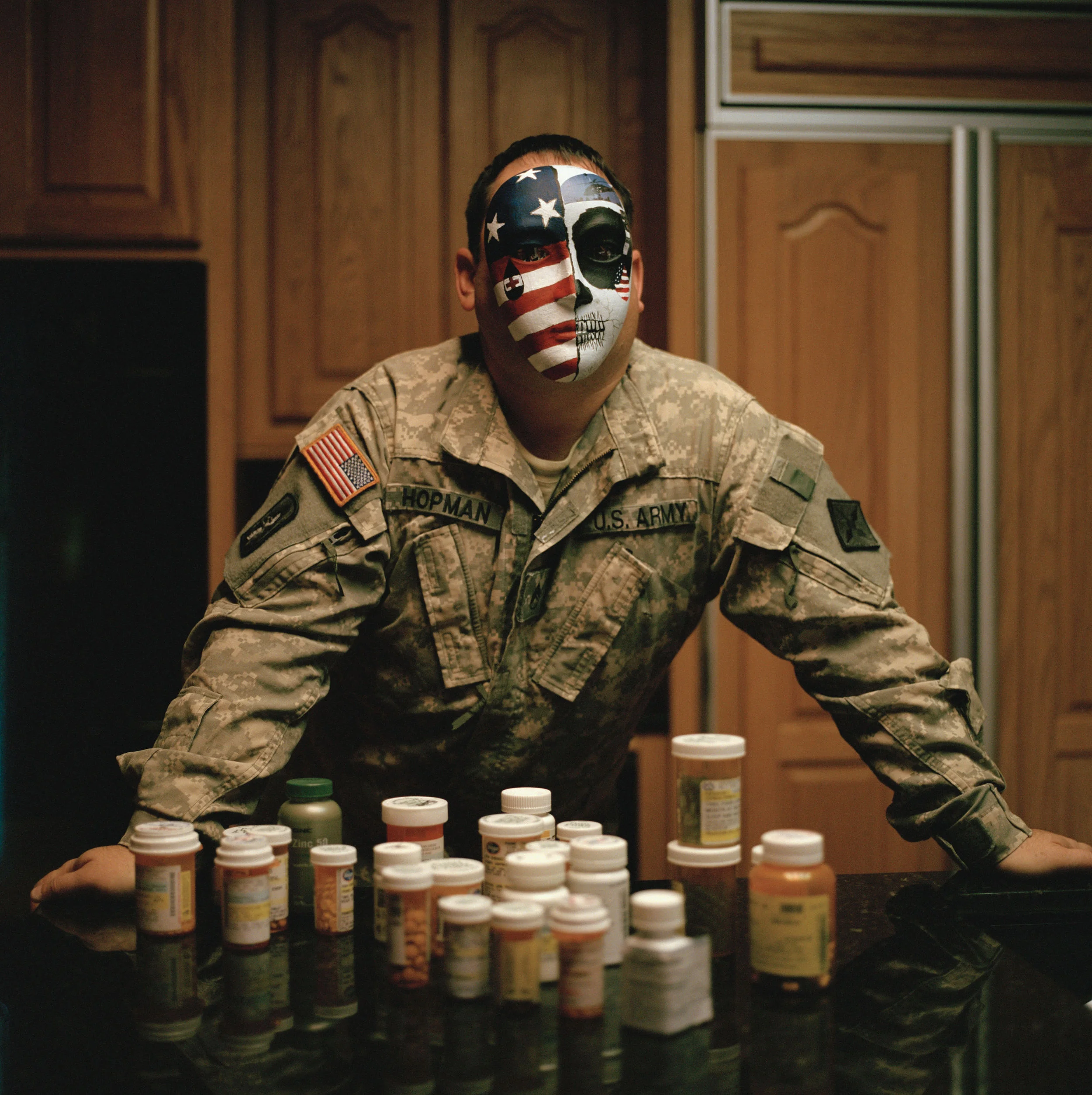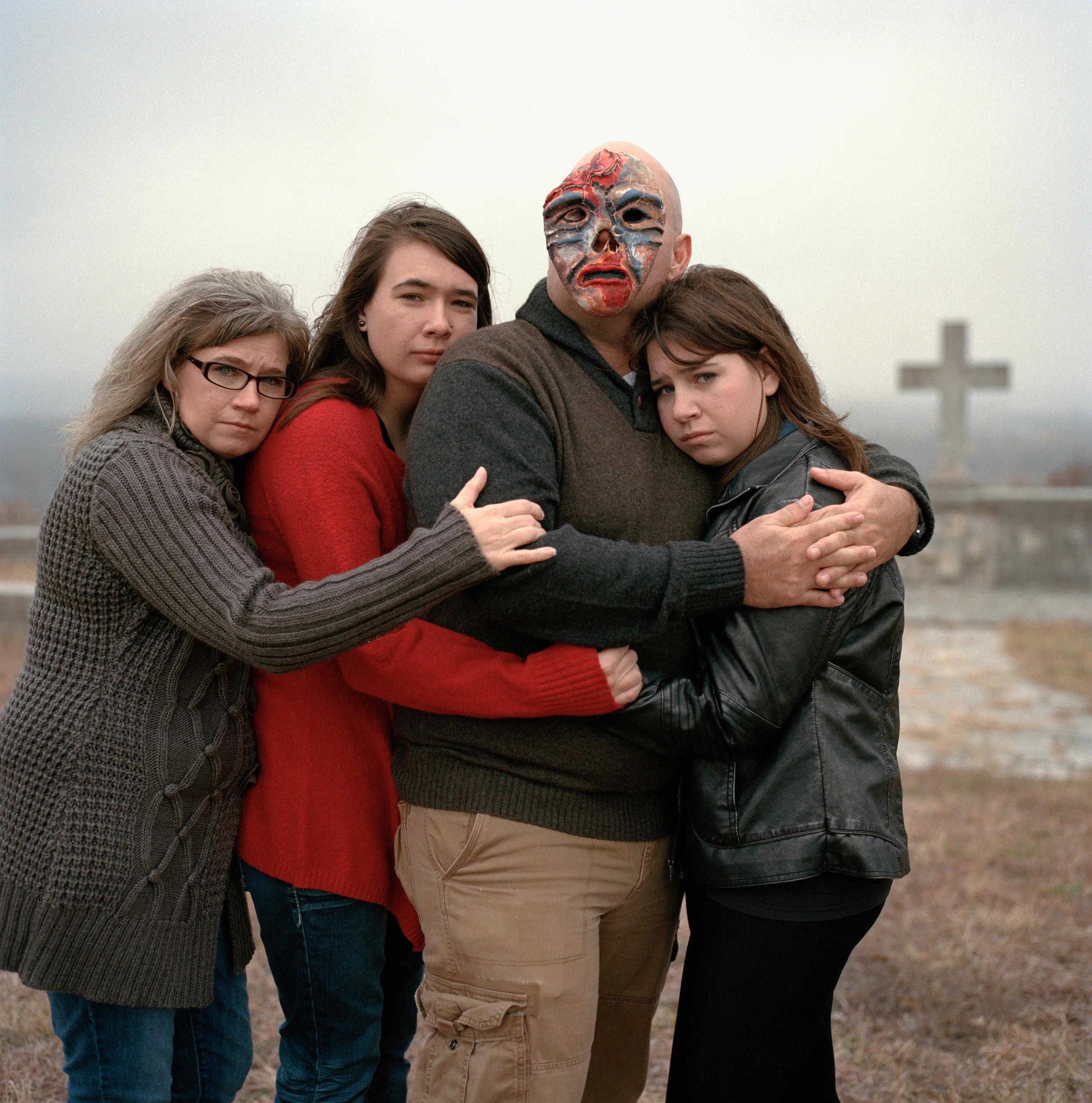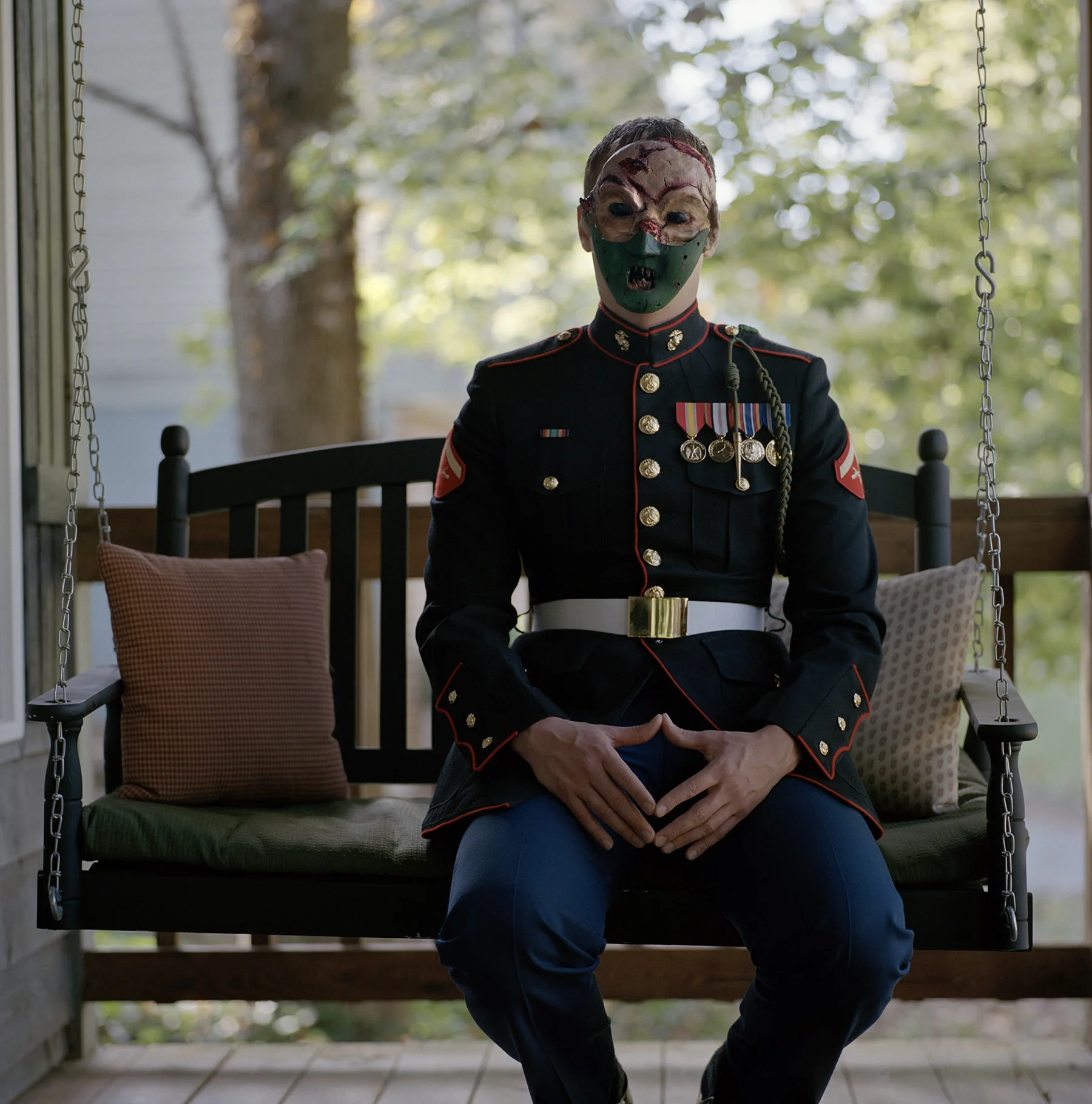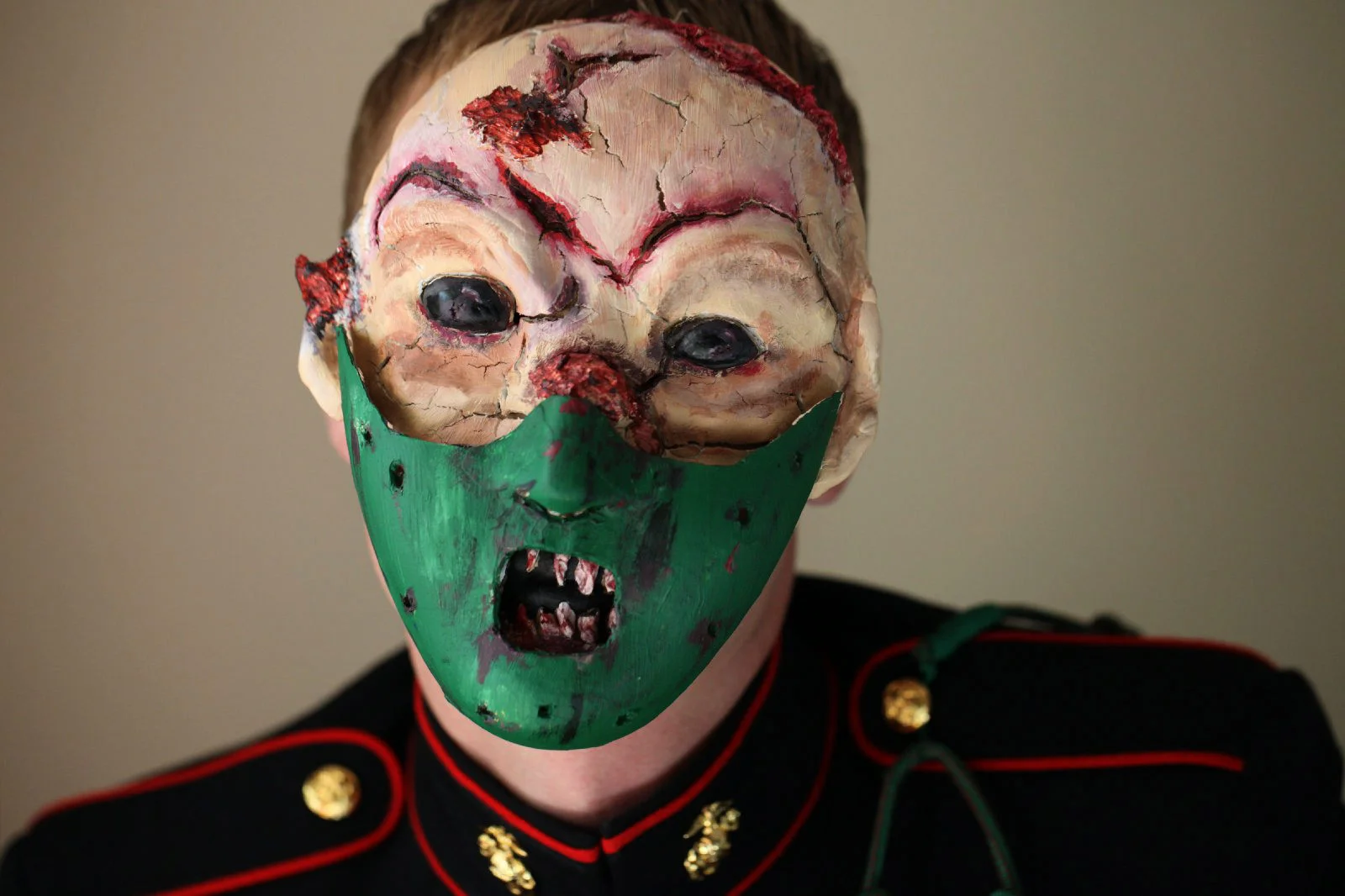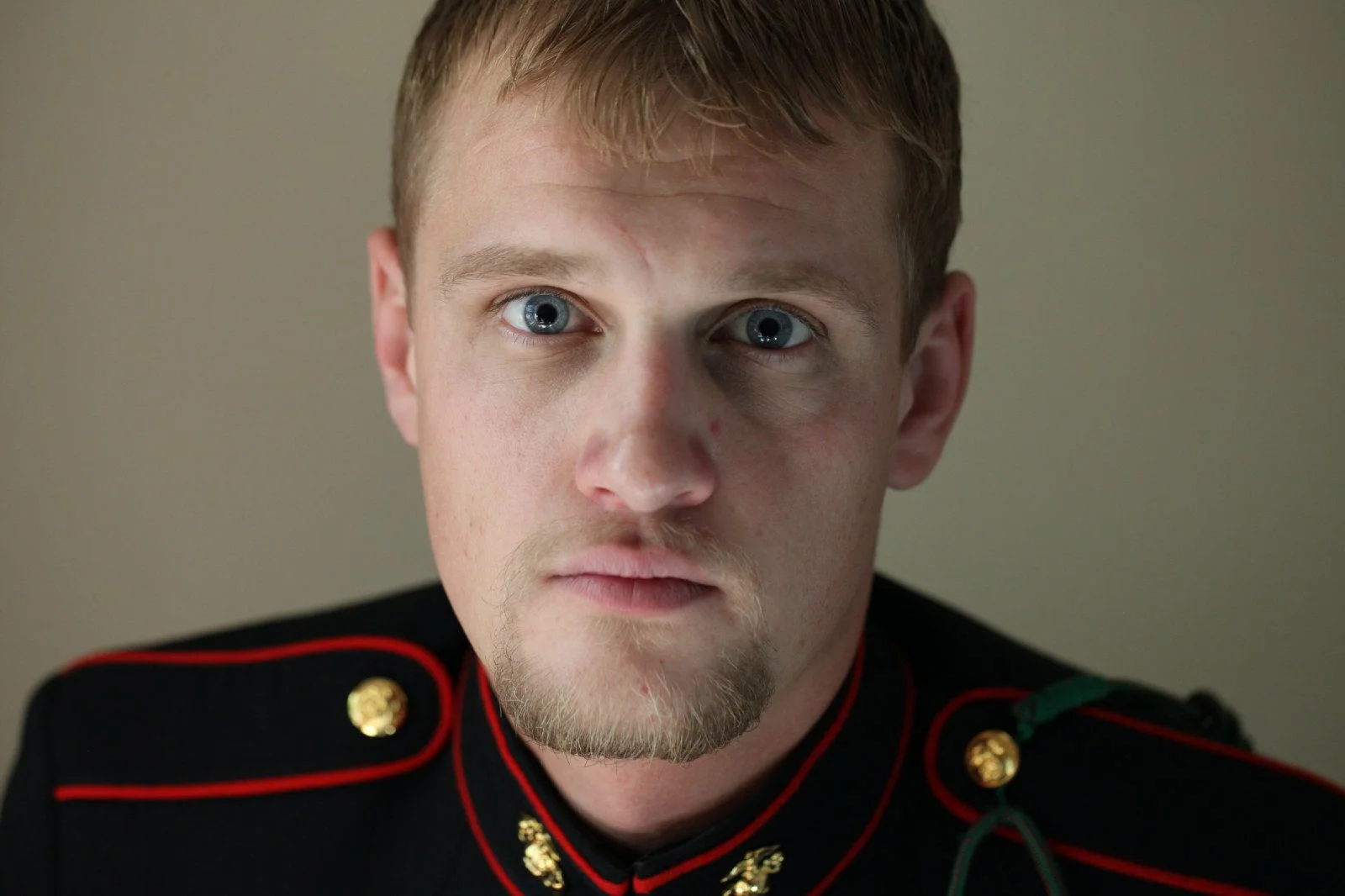Blast Force
“I got blown up.” That’s what they say. “I was right there in the blast seat.” Blast force—the signature injury of the conflicts in Iraq and Afghanistan—creates a pressure so powerful it can be seen before it is heard or felt. Soldiers remember confusion, deafness, slowdown, the feeling of being squashed. Positive and negative pressure waves roll through the body, shattering nerve pathways. And the soldier is never the same. They say they feel “crazy:” hyper-vigilant, sleepless, suicidal. They have language and hearing problems, memory loss and migraines. They anger easily. They abuse alcohol and drugs. Wives and lovers leave them, and their children fear them. Soldiers long for a missing arm, leg, eye—a visible wound that would command respect and understanding.
The veterans in these photographs—Aaron, Bo, Chris, Perry, Tiffany, David and Maj. Jeff Hall—found help at the National Intrepid Center of Excellence, a Department of Defense institute that serves some of the 360,000 men and women damaged by blast force injuries. In addition to receiving sophisticated imaging and care from physicians and therapists, soldiers make masks. Making art cracks open the trauma and then knits the brain. The masks, like MRIs of their psyches, make the scars of blast force visible, a first step to healing.
The Invisible War on the Brain as published in National Geographic Magazine (U.S. print edition)

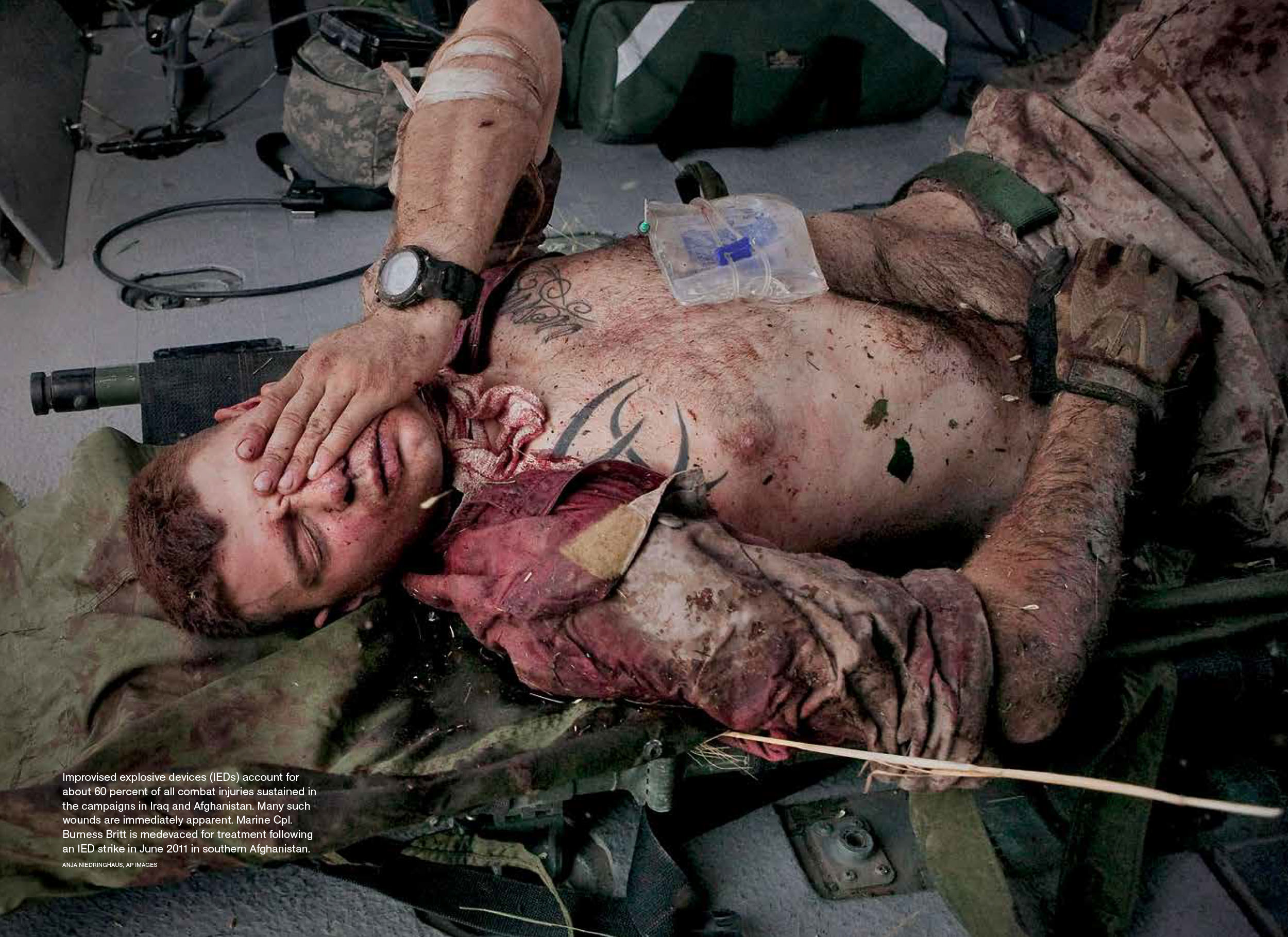
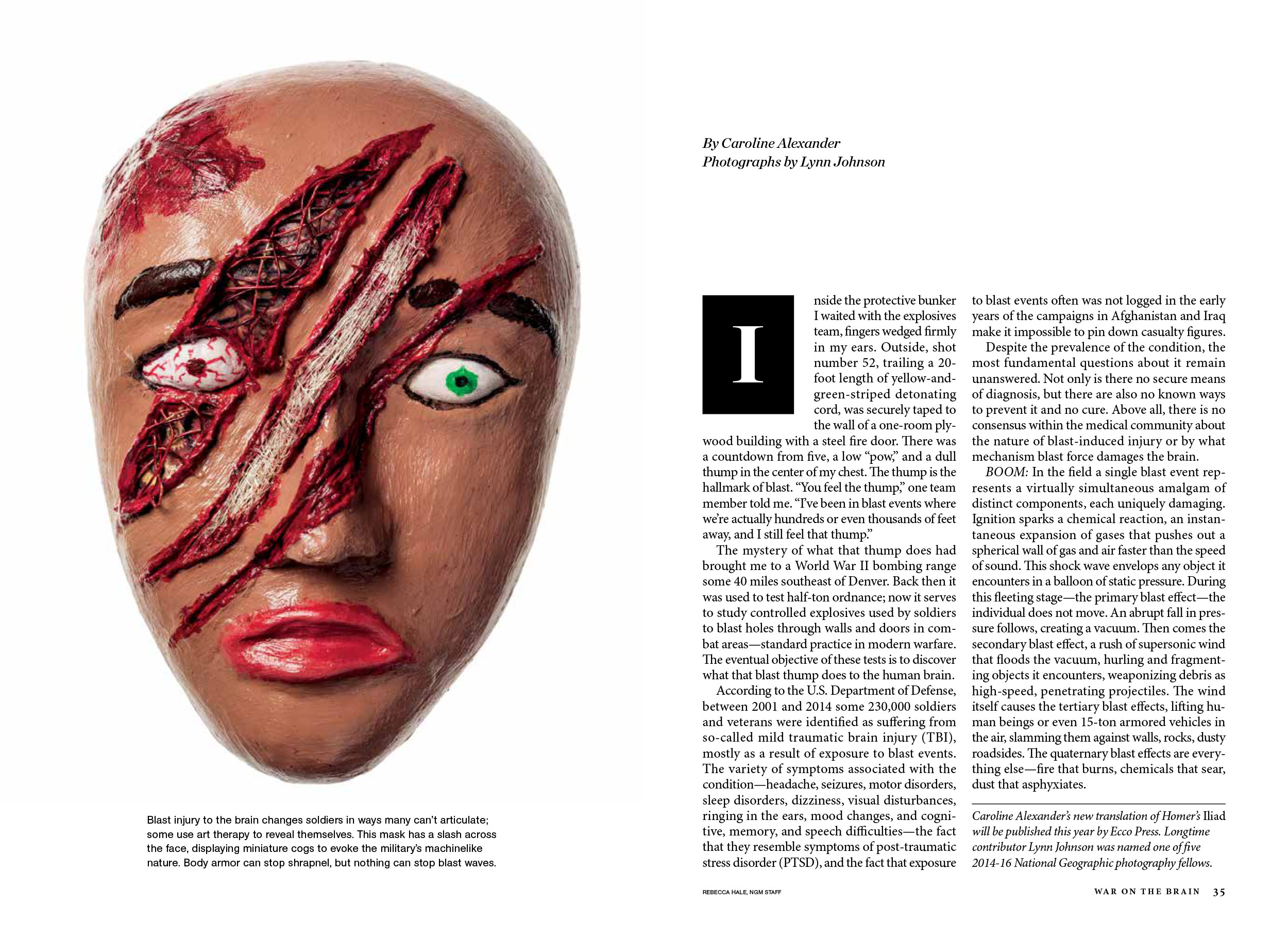
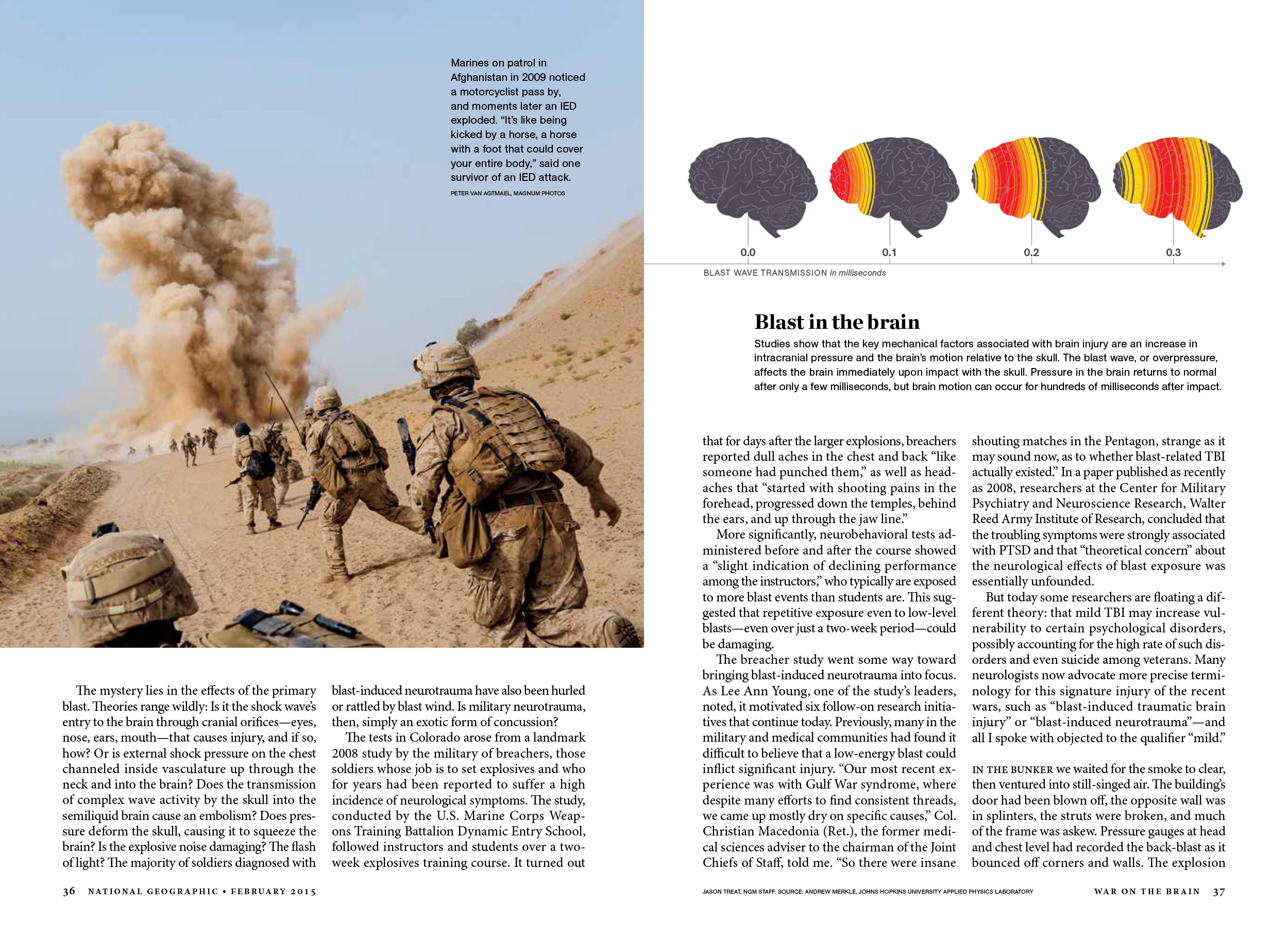
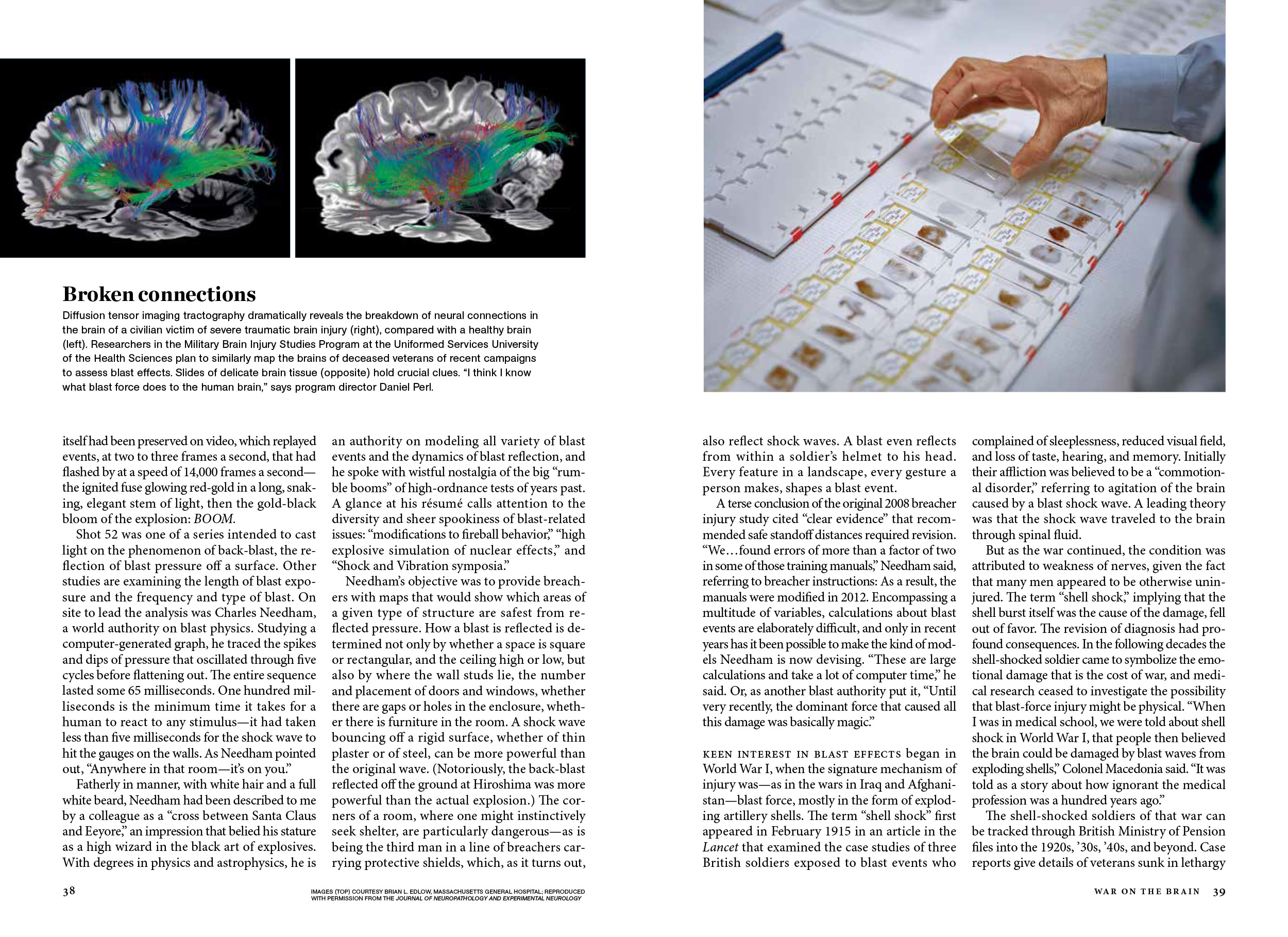

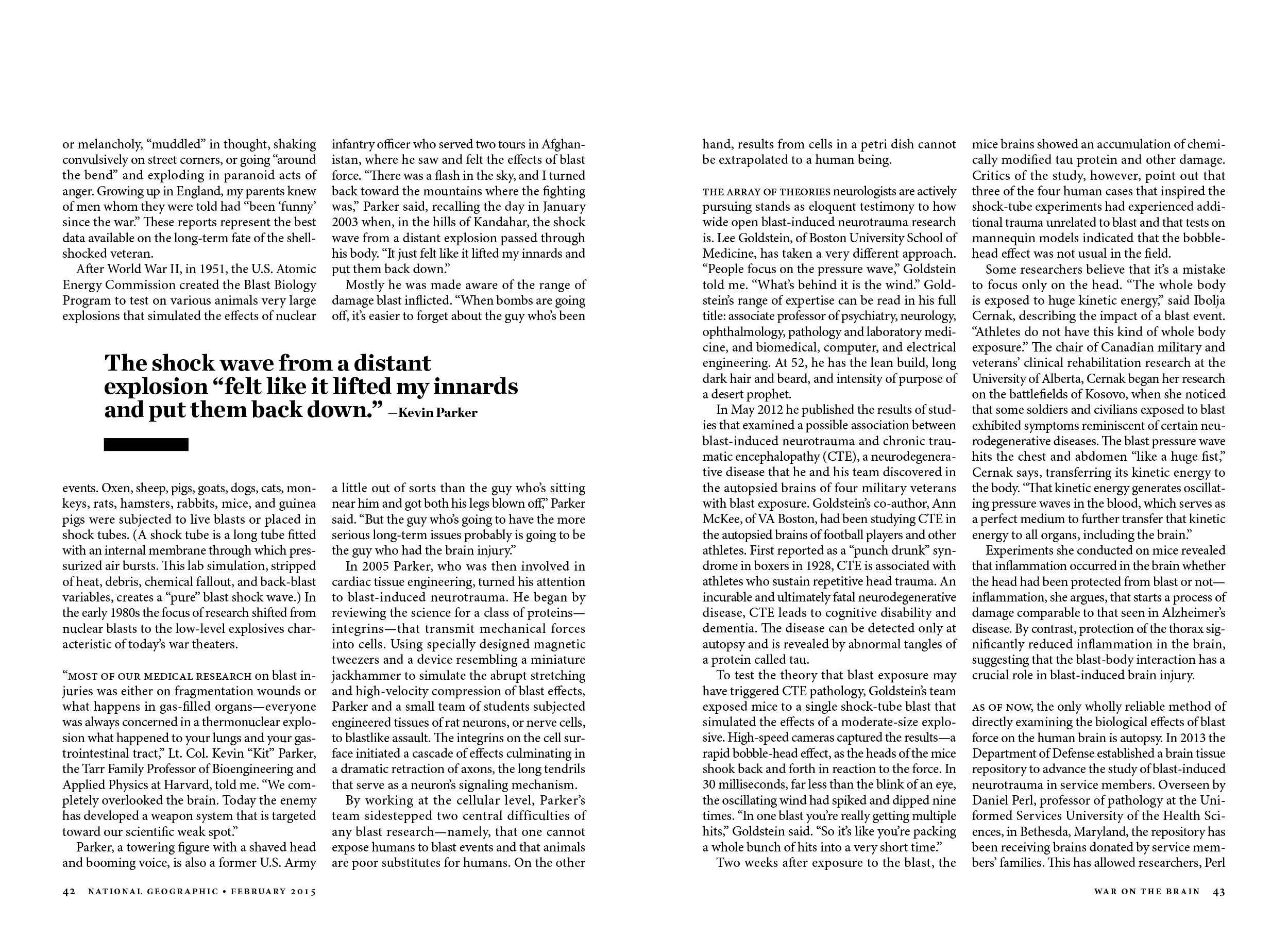
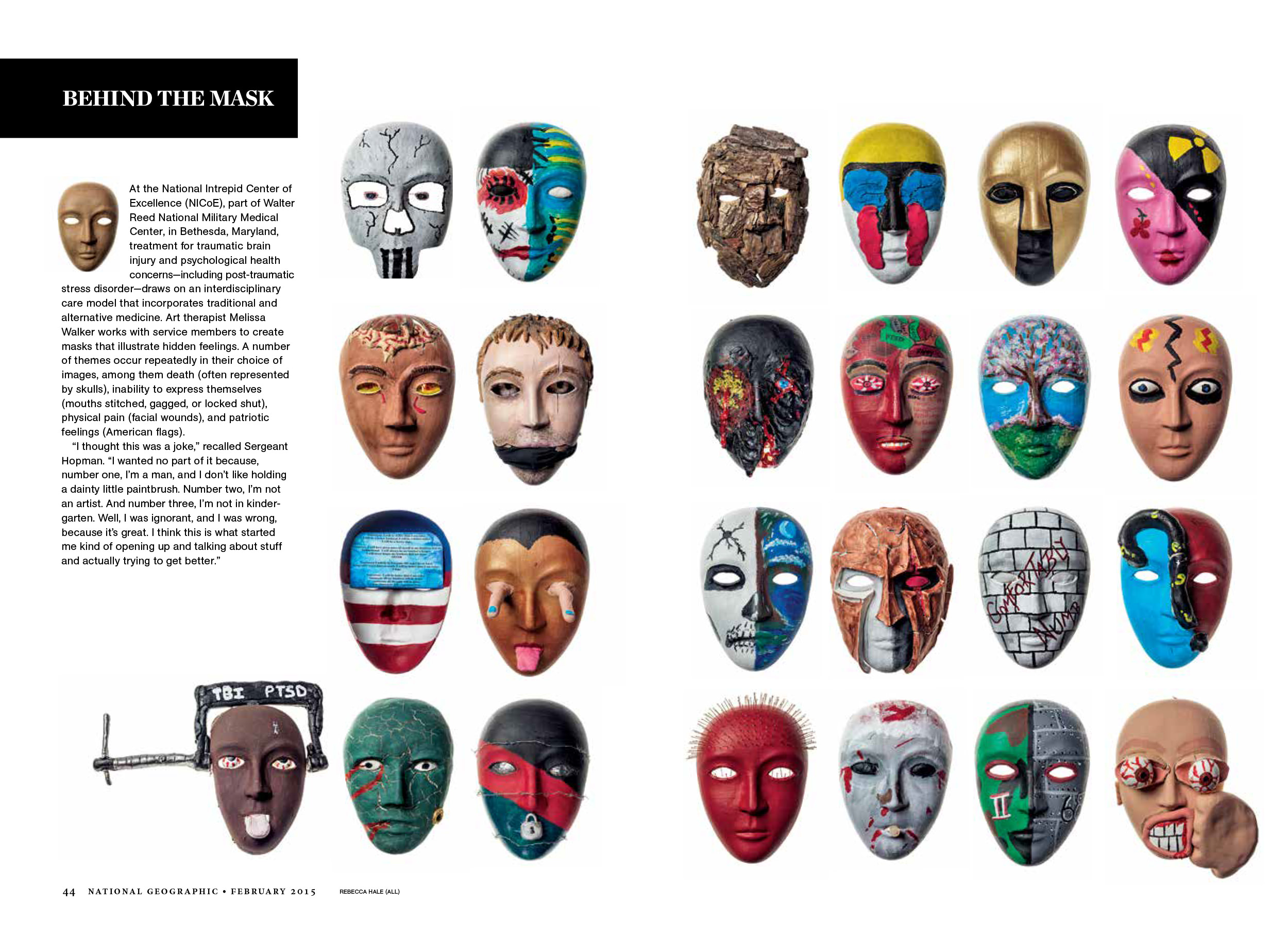

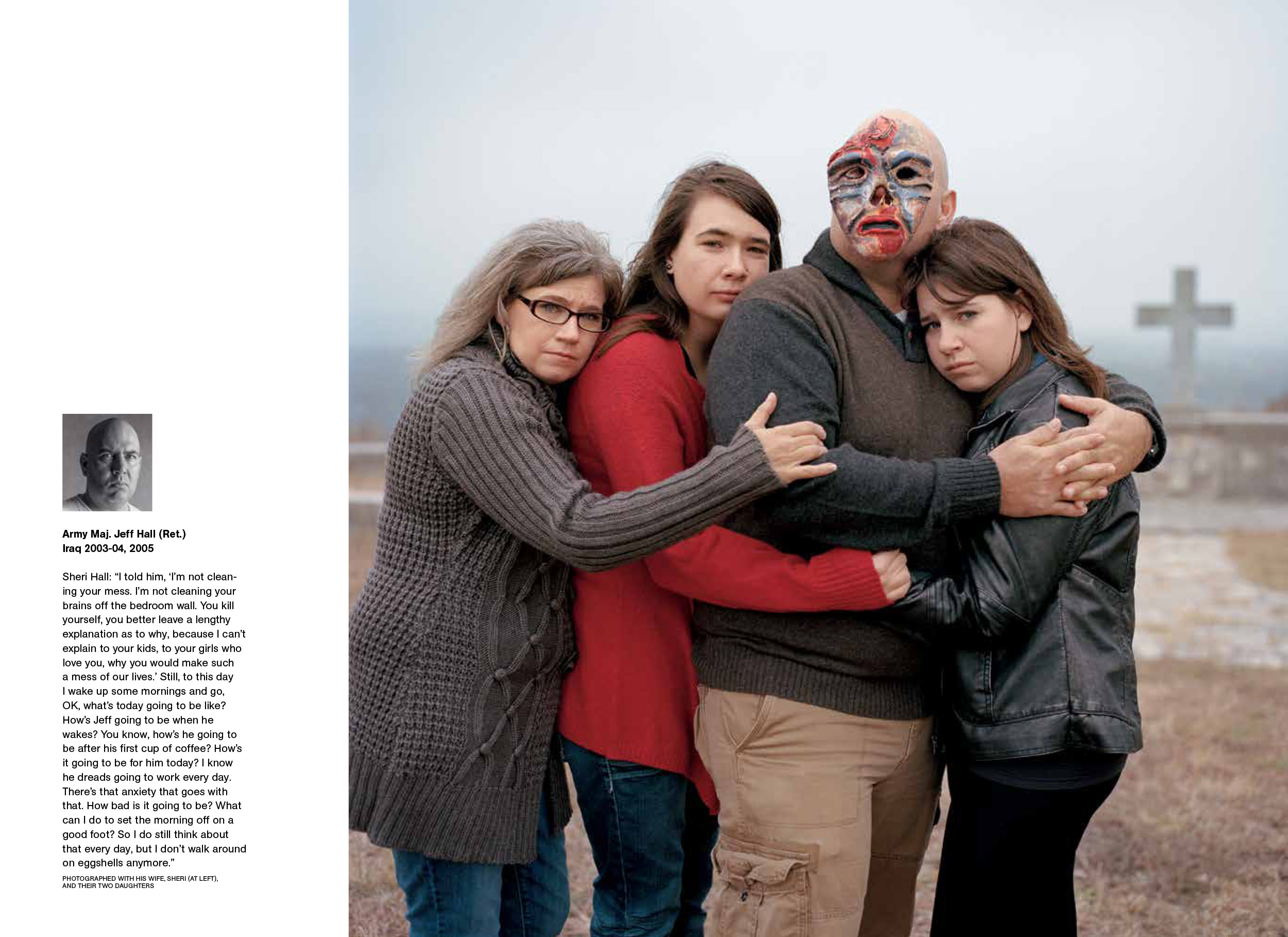
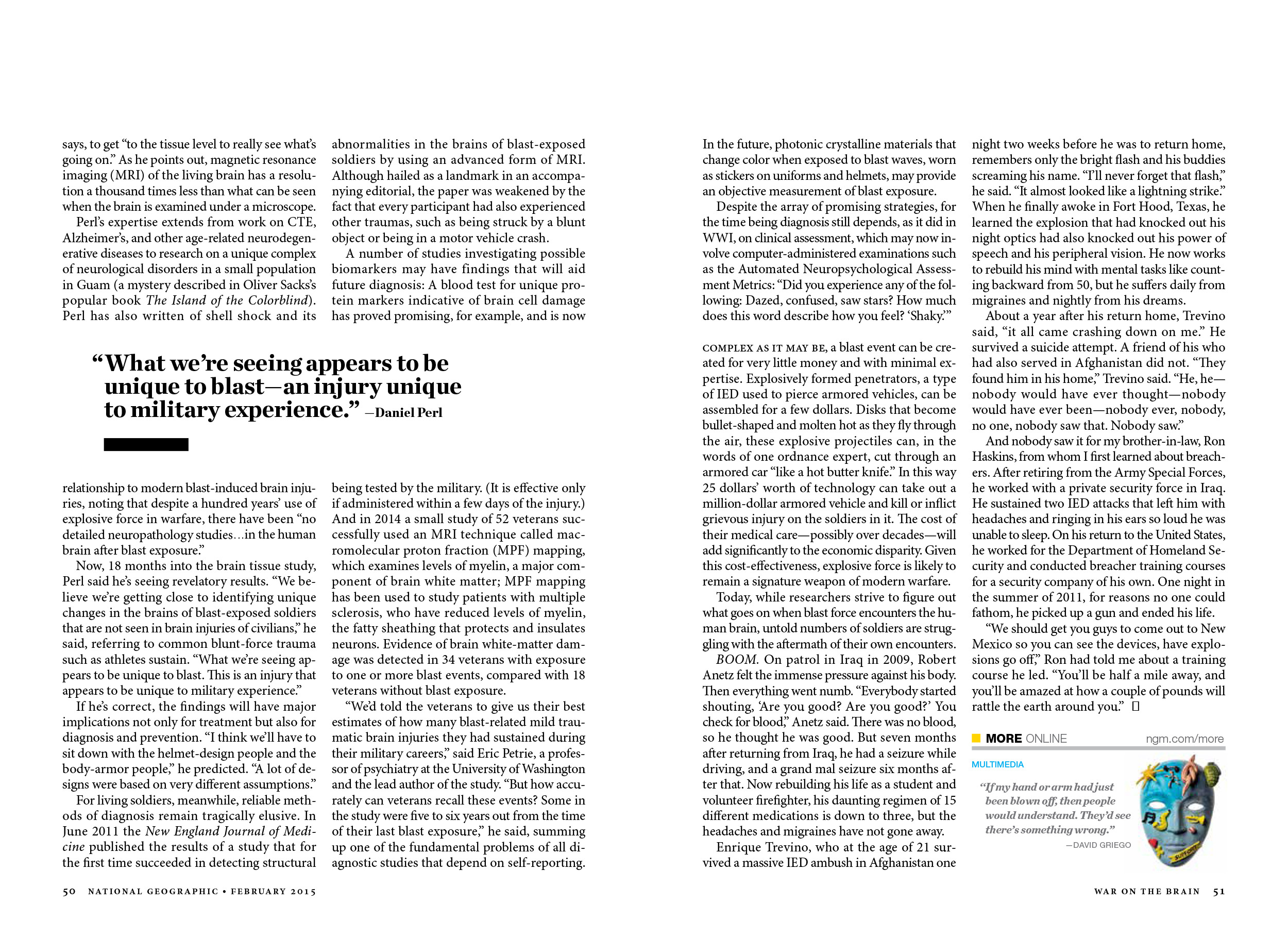
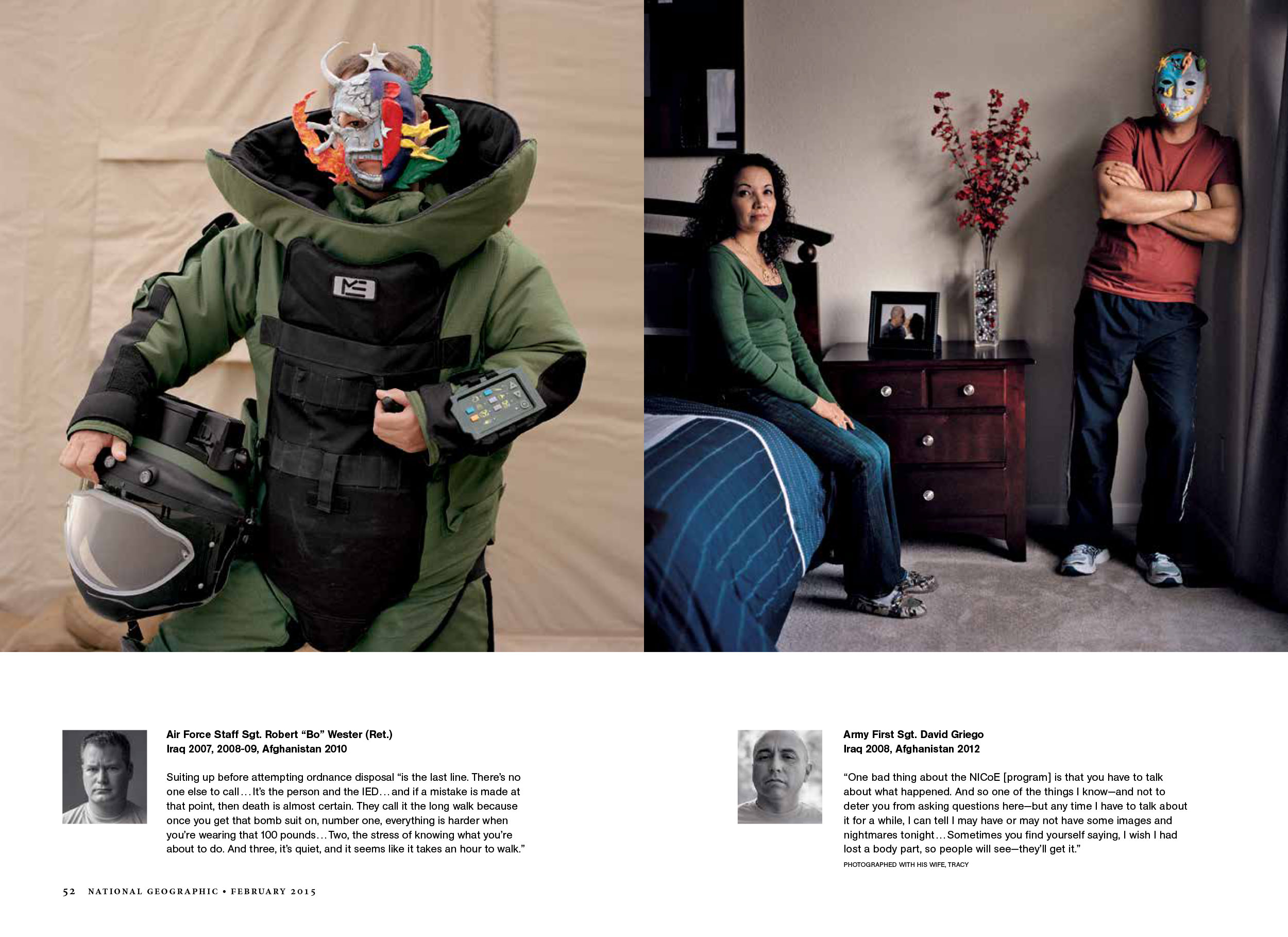
“Blast Force: The Invisible War on the Brain” in the February 2015 issue of National Geographic Magazine.
See also: “Behind the Mask: Reveling the Trauma of War” and “The Art of Recovery”

